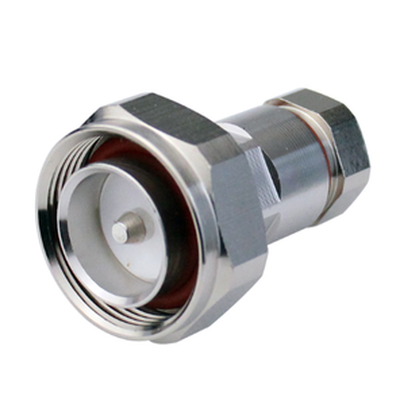Forums » News and Announcements
ball valve assembly machine processing common problem points
-
ball valve assembly machine processing common problem points and improvement methods? In other words, know yourself and know your enemy in order to fight without danger, so is the operation and use of CNC lathes, how to get the best use effect within their own scope, high production efficiency, long service life of the machine tool, safe and effective use of the process and so on. Based on the actual production, this paper summarizes the common problems and improvement methods during the processing of ball valve assembly machine. The common problem points and improvement methods in the processing process, as well as how to choose the three important factors of speed, feed rate and cutting depth in different application areas, are for your reference. These contents not only apply to the ball valve assembly machine processing process, there are other CNC lathes can also be. Due to the rich content of the article, I hope you read patiently.
First, the workpiece is over-cut
The reason:
Snap knife, the tool strength is not enough too long or too small, resulting in the tool snap knife.
Operator misoperation.
Uneven cutting allowance. (such as: 0.5 on the side of the surface, 0.15 on the bottom)
Improper cutting parameters. (such as: tolerance is too big, SF setting too fast, etc.)
Improvements:
The principle of using a knife: can be big or small, can be short or not long.
Add the corner cleaning program, and leave the margin as even as possible. (Side and bottom margin remain the same)
Reasonable adjustment of cutting parameters, large margin corner round.
With the SF function of the machine, the operator fine-tunes the speed of the machine to achieve optimal cutting results.
Second, the central question
The reason:
Inaccurate manual operation by the operator.
There are burrs around the mold.
The center bar has magnetic field.
The four sides of the mold are not vertical.
Improvements:
Manual operation should be carefully checked repeatedly, and the points should be at the same height as far as possible.
Remove burrs around the mold with a whetstone or file, wipe clean with a rag, and finally confirm by hand.
Demagnetize the rod before centering the die. (Available ceramic center bar or other)
Check whether the four sides of the mold are vertical. (The verticality error needs to be reviewed with the fitter)
Three, the knife problem
The reason:
Inaccurate manual operation by the operator.
Tool clamping error.
Wrong blade on the throwing knife. (The knife itself has a certain error)
There is an error between the R knife and the flat knife and the flying knife.
Improvements:
Manual operation should be carefully checked repeatedly, and the knife should be at the same point as possible.
When the tool is installed, blow it clean with an air gun or wipe it with a rag.
One blade can be used when the blade on the flying knife is to measure the bar and light the bottom surface.
A separate tool program can avoid the error between R knife flat knife flying knife.
Four, the crash - programming
The reason:
The safety altitude is insufficient or not set. (The knife or chuck hits the workpiece when fast feeding G00)
The tool on the program list and the actual program tool are written incorrectly.
The tool length (blade length) and the actual machining depth on the program sheet are wrong.
The depth Z-axis fetch and the actual Z-axis fetch on the program are written incorrectly.
Wrong coordinates set during programming.
Improvements:
Accurate measurement of the height of the workpiece also ensures that the safety height is above the workpiece.
The tool on the program list should be consistent with the actual program tool. (Try to use automatic program list or use pictures to program list) Add wechat: Yuki7557 send a macro program tutorial
The depth of the actual machining on the workpiece is measured, and the length of the tool and the length of the blade are clearly written on the program sheet. (The general tool clip length is 2-3MM higher than the workpiece, and the blade length avoidance is 0.5-1.0MM)
The actual Z-axis fetch number on the workpiece is written clearly on the program sheet. (This operation is generally manual operation to be written to check repeatedly)
5. Crash machine - Operator
The reason:
Depth Z-axis alignment error ·.
The midpoint touch number and operation number are incorrect. (such as: unilateral access without feed radius, etc.)
With the wrong knife. (such as: D4 knife with D10 knife processing)
The program went wrong. (For example: A7.NC goes A9.NC)
The hand wheel is turned in the wrong direction during manual operation.
Press the wrong direction for manual fast feed. (e.g. -X press +X)
Improvements:
Depth Z-axis knife must pay attention to the position of the knife. (bottom, top, analysis, etc.)
The number of touches and the number of operations should be checked repeatedly after completion.
When installing the tool, it should be installed after repeated check with the program list and the program.
The program goes in sequence, one by one.
In the manual operation, the operator himself to strengthen the operating proficiency of the machine.
When moving quickly manually, the Z-axis can be raised above the workpiece before moving.
6. Surface accuracy
The reason:
The cutting parameters are unreasonable and the workpiece surface is rough.
The cutting edge of the knife is not sharp.
Tool clamping is too long, blade avoidance is too long.
Chip removal, blowing, oil flushing is not good.
Programming knife walking mode. (Can try to consider down milling)
The workpiece has burrs.
ball valve assembly machine https://www.zjshuangzheng.com/Rotary-Table-Intelligent-Assembly-Machine.html
